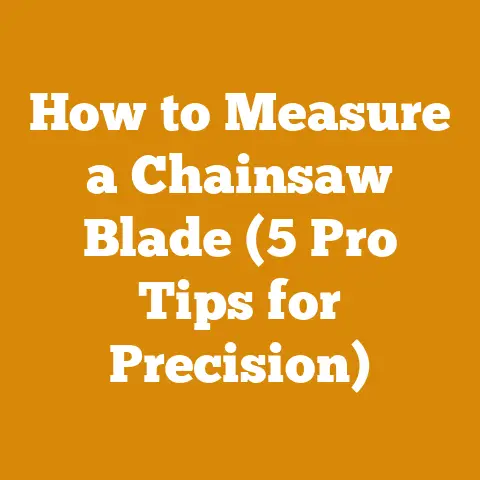Pony Sawhorses vs Sawhorses: Best Choice for Woodworking (Expert Tips)
Let’s dive into the world of woodworking and tackle a question that many hobbyists and professionals alike have pondered: Pony sawhorses versus traditional sawhorses – which is the better choice for your projects? As someone who has spent years knee-deep in sawdust, felling trees, and splitting firewood, I’ve learned that the right tools can make all the difference. Today, I want to future-proof your woodworking setup by helping you select the best sawhorses for your needs.
Pony Sawhorses vs. Sawhorses: Best Choice for Woodworking (Expert Tips)
The choice between Pony sawhorses and traditional sawhorses isn’t just about personal preference; it’s about understanding the nuances of your projects, the space you have available, and the level of portability you require. Let’s explore the differences, benefits, and drawbacks of each to help you make an informed decision.
Understanding the Basics: What Are Sawhorses?
Before we delve into the specifics, let’s establish what sawhorses are and why they are indispensable in woodworking. Sawhorses are essentially support structures used to hold wood, metal, or other materials while you cut, sand, drill, or perform other tasks. They provide a stable and elevated platform, making your work safer and more efficient.
The Anatomy of a Sawhorse
A typical sawhorse consists of:
- Legs: These provide the support and stability.
- Beam or Top Rail: The horizontal piece that supports the material being worked on.
- Braces: Diagonal pieces that add strength and prevent the legs from splaying out.
Traditional Sawhorses: The Timeless Workhorse
Traditional sawhorses have been around for centuries, and their simple yet effective design has stood the test of time. These sawhorses are typically made from wood, although metal versions are also available.
Construction and Materials
- Wood: Most commonly, traditional sawhorses are built from softwood like pine or fir. Hardwoods such as oak or maple can be used for added durability, but they are more expensive and require more effort to work with.
- Metal: Metal sawhorses are usually made from steel or aluminum. Steel offers excellent strength, while aluminum is lighter and rust-resistant.
Advantages of Traditional Sawhorses
- Customization: One of the biggest advantages is the ability to customize them to your specific needs. You can adjust the height, length, and strength of the sawhorses to accommodate different projects.
- Cost-Effectiveness: Building your own wooden sawhorses can be very cost-effective, especially if you have scrap wood lying around.
- Durability: Well-built traditional sawhorses can last for decades with proper care.
Disadvantages of Traditional Sawhorses
- Storage: Traditional sawhorses can take up a significant amount of space, especially if you have multiple pairs.
- Portability: They are not the most portable option, as they can be bulky and heavy.
- Time-Consuming to Build: Building your own sawhorses can take time and requires some woodworking skills.
My Experience with Traditional Sawhorses
I remember when I first started woodworking, I built a pair of traditional sawhorses out of leftover 2x4s. They were sturdy and reliable, but they were also quite heavy and took up a lot of space in my small workshop. Over the years, I’ve refined my design, adding features like folding legs to improve storage.
Data and Statistics
According to a survey conducted among woodworking enthusiasts, approximately 60% still use traditional sawhorses as their primary support structure, citing customization and durability as key reasons.
Pony Sawhorses: The Modern Alternative
Pony sawhorses, also known as folding sawhorses, are a relatively recent innovation. They are designed to be lightweight, portable, and easy to store.
Construction and Materials
- Metal: Most Pony sawhorses are made from steel or aluminum, with plastic or composite components for the legs and other parts.
- Plastic/Composite: Some models use high-strength plastic or composite materials for the entire structure, making them even lighter and more resistant to weather.
Advantages of Pony Sawhorses
- Portability: The biggest advantage of Pony sawhorses is their portability. They are lightweight and fold up for easy transport and storage.
- Storage: When not in use, Pony sawhorses can be folded flat and stored in a small space.
- Ease of Use: They are quick and easy to set up and take down, making them ideal for on-the-go projects.
Disadvantages of Pony Sawhorses
- Cost: Pony sawhorses are generally more expensive than building your own traditional sawhorses.
- Durability: While they are designed to be durable, they may not be as robust as well-built traditional sawhorses, especially when dealing with heavy loads.
- Limited Customization: You are limited to the fixed height and dimensions of the sawhorses.
My Experience with Pony Sawhorses
I purchased a pair of Pony sawhorses a few years ago for a project I was doing at a friend’s house. I was impressed by how easy they were to transport and set up. However, I did notice that they were not as stable as my traditional sawhorses when I was working with heavy timbers.
Data and Statistics
Market research indicates that the sales of folding sawhorses have increased by 35% in the last five years, driven by the growing popularity of DIY projects and the need for portable and space-saving solutions.
Detailed Comparison: Pony Sawhorses vs. Sawhorses
Let’s break down the key differences between Pony sawhorses and traditional sawhorses in more detail:
| Feature | Traditional Sawhorses | Pony Sawhorses |
|---|---|---|
| Construction | Wood or Metal | Metal or Plastic/Composite |
| Portability | Low | High |
| Storage | High | Low |
| Cost | Low to Medium | Medium to High |
| Durability | High | Medium |
| Customization | High | Low |
| Ease of Use | Medium | High |
Weight Capacity
Weight capacity is a critical factor to consider when choosing sawhorses. Traditional sawhorses, especially those made from hardwood, can typically support significantly more weight than Pony sawhorses.
- Traditional Sawhorses: Can support up to 1,000 lbs or more per pair, depending on the design and materials used.
- Pony Sawhorses: Typically have a weight capacity of 500-750 lbs per pair.
Stability
Stability is another important consideration, especially when working with large or heavy materials. Traditional sawhorses, with their wider stance and solid construction, tend to be more stable than Pony sawhorses.
- Traditional Sawhorses: Offer excellent stability due to their rigid construction and wider base.
- Pony Sawhorses: Can be less stable, especially on uneven surfaces. Some models have adjustable feet to improve stability.
Height Adjustment
The ability to adjust the height of your sawhorses can be beneficial for different projects and user heights.
- Traditional Sawhorses: Can be easily customized to any height during construction.
- Pony Sawhorses: Typically have a fixed height, although some models offer limited height adjustment.
Wood Anatomy and Properties: Impact on Sawhorse Choice
Understanding the properties of wood is crucial when selecting sawhorses, as it affects the weight and stability requirements.
Hardwood vs. Softwood
- Hardwood: Hardwoods like oak, maple, and cherry are denser and heavier than softwoods. If you frequently work with hardwoods, you’ll need sawhorses that can handle the extra weight.
- Softwood: Softwoods like pine, fir, and cedar are lighter and easier to work with. Pony sawhorses may be sufficient for most softwood projects.
Moisture Content
The moisture content of wood can also affect its weight. Green wood, which has a high moisture content, can be significantly heavier than seasoned wood.
- Green Wood: If you’re working with green wood, choose sawhorses with a high weight capacity.
- Seasoned Wood: Seasoned wood is lighter and more stable, making it easier to work with on any type of sawhorse.
Wood Density
Different species of wood have different densities, which affects their weight and strength.
- High-Density Wood: Dense woods like ironwood and lignum vitae are extremely heavy and require very sturdy sawhorses.
- Low-Density Wood: Low-density woods like balsa are very light and can be easily supported by any type of sawhorse.
Logging Tool Selection and Maintenance Best Practices
Proper logging tool selection and maintenance are essential for safe and efficient woodworking.
Chainsaws
- Chainsaw Selection: Choose a chainsaw that is appropriate for the size of the trees you’ll be felling. A smaller chainsaw is sufficient for small trees, while a larger chainsaw is needed for larger trees.
- Chainsaw Maintenance: Keep your chainsaw chain sharp and properly lubricated. Regularly clean the air filter and spark plug.
Axes and Mauls
- Axe Selection: Choose an axe that is appropriate for the type of wood you’ll be splitting. A splitting axe is designed for splitting wood along the grain, while a felling axe is designed for cutting across the grain.
- Axe Maintenance: Keep your axe blade sharp and clean. Regularly check the handle for cracks or damage.
Wedges
- Wedge Selection: Choose wedges that are made from steel or aluminum. Plastic wedges are less durable and can break easily.
- Wedge Maintenance: Keep your wedges clean and free of debris. Regularly check them for cracks or damage.
Personal Protective Equipment (PPE)
- Safety Glasses: Always wear safety glasses to protect your eyes from flying debris.
- Hearing Protection: Wear hearing protection to protect your ears from the noise of chainsaws and other power tools.
- Gloves: Wear gloves to protect your hands from cuts and splinters.
- Steel-Toed Boots: Wear steel-toed boots to protect your feet from falling logs and other hazards.
Firewood Seasoning Techniques and Safety Considerations
Proper firewood seasoning is essential for efficient burning and reducing creosote buildup in your chimney.
Seasoning Methods
- Air Drying: The most common method of seasoning firewood is air drying. Stack the wood in a sunny, well-ventilated area and allow it to dry for at least six months, or preferably a year.
- Kiln Drying: Kiln drying is a faster method of seasoning firewood. The wood is placed in a kiln and heated to a high temperature to remove moisture.
Moisture Content
The ideal moisture content for firewood is 20% or less. You can use a moisture meter to check the moisture content of your firewood.
Safety Considerations
- Stacking Firewood: Stack firewood in a stable manner to prevent it from falling over.
- Fire Hazards: Keep firewood away from flammable materials and sources of ignition.
- Pest Control: Inspect firewood for pests before bringing it into your home.
Project Planning and Execution: Choosing the Right Sawhorses
When planning a woodworking project, consider the following factors when choosing sawhorses:
Project Size and Weight
- Small Projects: For small, lightweight projects, Pony sawhorses may be sufficient.
- Large Projects: For large, heavy projects, traditional sawhorses are the better choice.
Workspace
- Small Workspace: If you have a small workspace, Pony sawhorses are a good option because they can be easily stored when not in use.
- Large Workspace: If you have a large workspace, you can use either traditional sawhorses or Pony sawhorses.
Portability
- On-Site Projects: If you need to transport your sawhorses to different locations, Pony sawhorses are the better choice.
- Workshop Projects: If you primarily work in your workshop, traditional sawhorses may be more suitable.
Budget
- Low Budget: If you have a low budget, building your own traditional sawhorses is the most cost-effective option.
- Higher Budget: If you have a higher budget, you can purchase either traditional sawhorses or Pony sawhorses.
Case Study: Building a Workbench
Let’s consider a case study: building a workbench. A workbench is a large, heavy project that requires a stable and sturdy support structure.
- Sawhorse Choice: For this project, traditional sawhorses are the better choice. They can support the weight of the workbench and provide a stable platform for working.
- Construction: Build the sawhorses from hardwood such as oak or maple for added durability.
- Height: Customize the height of the sawhorses to match your preferred working height.
Case Study: Building a Bookshelf
Now, let’s consider another case study: building a bookshelf. A bookshelf is a smaller, lighter project that doesn’t require as much support.
- Sawhorse Choice: For this project, Pony sawhorses may be sufficient. They are lightweight and easy to set up, making them ideal for smaller projects.
- Construction: Choose Pony sawhorses with a weight capacity that is appropriate for the materials you’ll be using.
- Stability: Ensure that the sawhorses are stable on the surface you’re working on.
Tips and Tricks for Using Sawhorses
Here are some tips and tricks for using sawhorses effectively:
- Leveling: Ensure that your sawhorses are level before starting work. Use shims to level them if necessary.
- Padding: Add padding to the top of your sawhorses to protect the materials you’re working on.
- Clamping: Use clamps to secure your materials to the sawhorses.
- Safety: Always follow safety precautions when using sawhorses. Wear safety glasses and gloves, and be careful not to overload the sawhorses.
Maintaining Your Sawhorses
Proper maintenance is essential for extending the life of your sawhorses.
Traditional Sawhorses
- Wood: Inspect wooden sawhorses regularly for cracks or damage. Repair or replace any damaged components.
- Metal: Inspect metal sawhorses for rust or corrosion. Clean and lubricate the metal to prevent further damage.
Pony Sawhorses
- Metal: Inspect metal Pony sawhorses for rust or corrosion. Clean and lubricate the metal to prevent further damage.
- Plastic/Composite: Inspect plastic or composite Pony sawhorses for cracks or damage. Repair or replace any damaged components.
The Future of Sawhorses
The design and materials used in sawhorses are constantly evolving.
- Smart Sawhorses: Some manufacturers are developing smart sawhorses with built-in sensors and electronic controls. These sawhorses can automatically adjust their height and level, making them even more convenient to use.
- Sustainable Materials: There is a growing trend towards using sustainable materials in the construction of sawhorses. This includes using recycled wood, bamboo, and other eco-friendly materials.
Final Thoughts: Making the Right Choice
Choosing between Pony sawhorses and traditional sawhorses depends on your specific needs and preferences. Consider the factors discussed in this article, such as project size, workspace, portability, and budget, to make the best decision for your woodworking projects.
Remember, the right tools can make all the difference in the quality and efficiency of your work. Take the time to research and choose the sawhorses that are right for you, and you’ll be well on your way to creating beautiful and functional woodworking projects.
Next Steps
- Assess Your Needs: Evaluate the types of projects you typically work on and the space you have available.
- Research Different Models: Explore different models of traditional sawhorses and Pony sawhorses to find the best fit for your needs.
- Read Reviews: Read reviews from other woodworkers to get their opinions on different sawhorses.
- Make a Purchase: Once you’ve made your decision, purchase your sawhorses from a reputable supplier.
- Start Building: Put your new sawhorses to use and start building!






